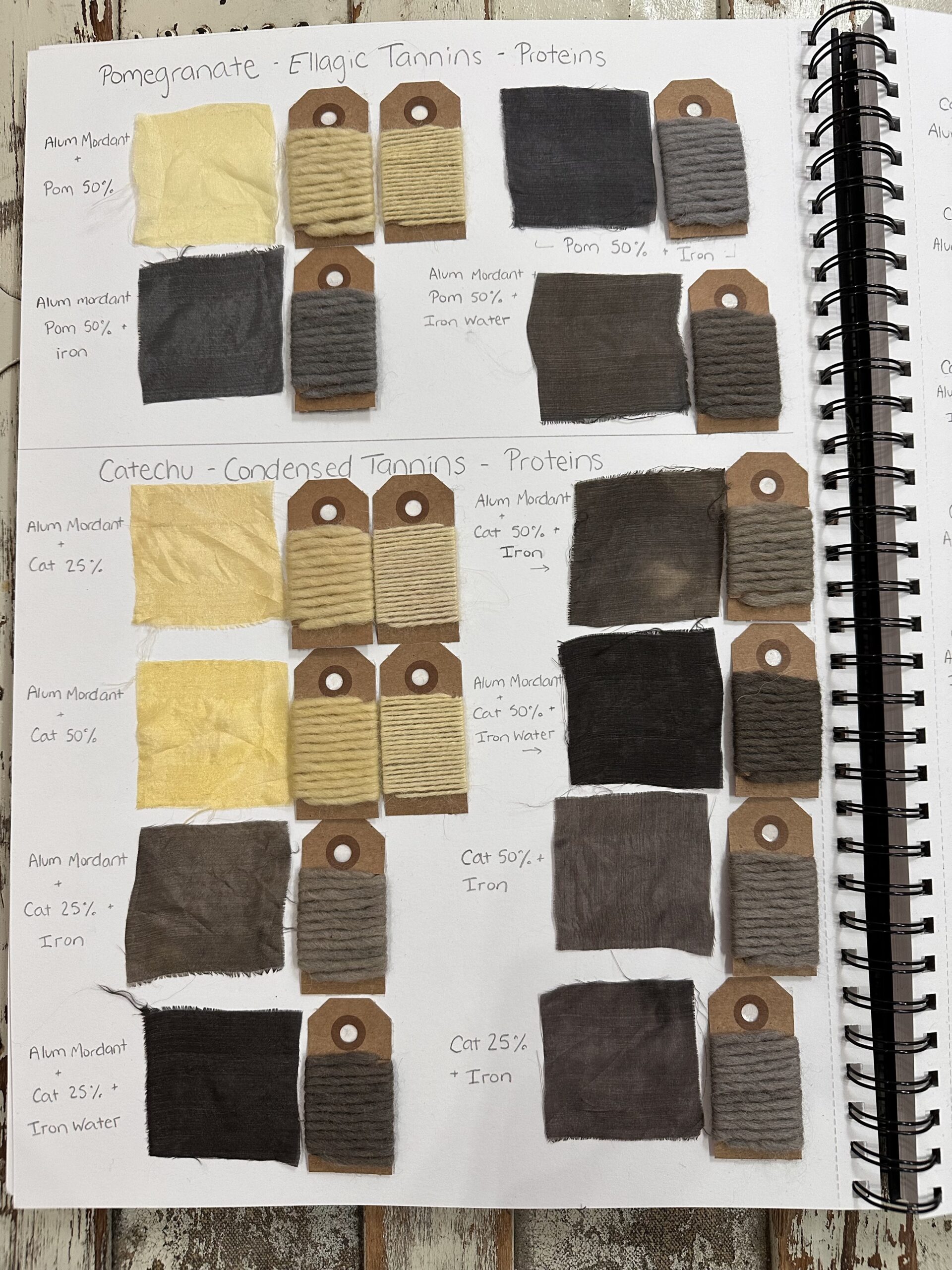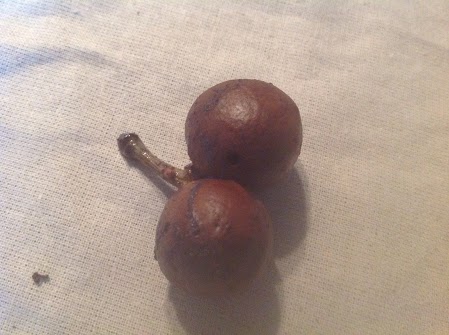Tannins have been used for centuries both colour and help fix other colurs to fabric and yarn. By themselves they colour these anything from a light beige to brown. They are found naturally occurring in various plant tissues, such as barks, leaves, and fruits, especially woody cones. They are particularly good as a mordant for cellulose fibres (plant based, like linen, cotton and nettle) and as a colour on which to build dark browns and blacks. A mordant is a substance that helps fix or set the dye on the fabric, improving colorfastness. They have an affinity for the fibers, creating a stable bond between the fabric and the dye molecules.
Here’s how tannins function as mordants in the dyeing process:
- Sources of Tannins:
- Plant Materials: Tannins are commonly found in the barks of trees such as oak, chestnut, and walnut. Other plant materials like tea leaves, pomegranate rinds, alder cones, acorn caps and certain fruits also contain tannins.
- Galls and Nuts: Some tannins are extracted from plant galls (abnormal growths on plants caused by insects or fungi) and nuts like acorns.
Tannins are extracted by either soaking the material for a couple of days ( for best results) or by gently simmering for at least an hour. They can be applied to the fabric either before dyeing (pre-mordanting) or after dyeing (post-mordanting). Pre-mordanting is often preferred for certain dyes, while post-mordanting allows for more control over the color, adding slowly to watch for the desired final outcome.


Leave a Reply